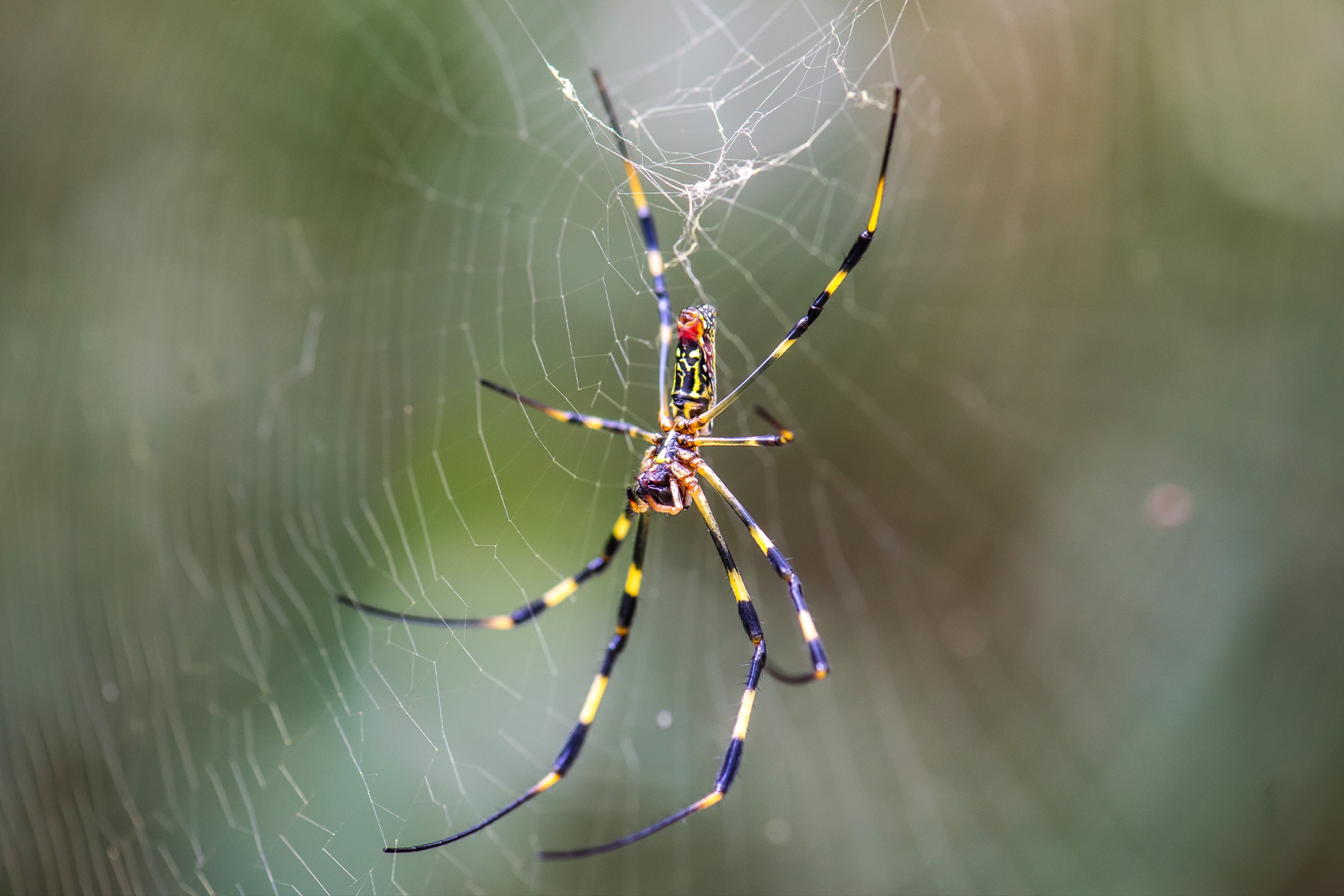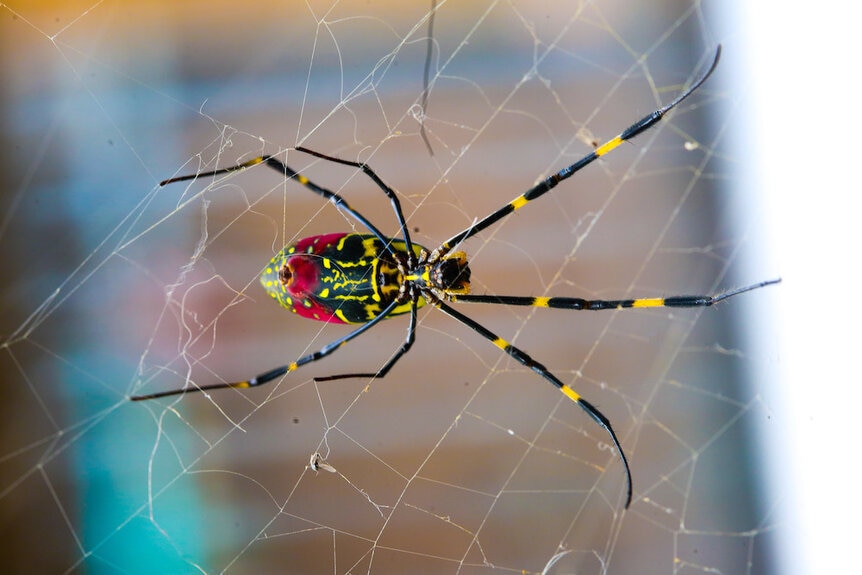Create a free profile to get unlimited access to exclusive videos, sweepstakes, and more!
Already Entrenched in Georgia, Invasive Joro Spiders Are "Poised" to Invade North American Cities
Honestly, they sound chill. Let 'em in.

Ecosystems work by striking a balance between all of the species living inside them. When species inside an ecosystem evolve alongside one another, that balance is usually built in. Predators don’t evolve to become too successful, otherwise they overhunt and decimate their own food supply. Prey don’t evolve to become too successful, otherwise they have a population boom creating a buffet for their predators, or they run out of resources and the population crashes again. A natural balance is maintained.
All of that changes when an invasive species is introduced. Giant African snails are presently staging an invasion of the Florida coast; an army of crabs once invaded Alaska; a clone species of crayfish has spread from its birthplace in an aquarium to waterways all over the world; and in 2015, a species of lava-breathing spiders emerged in Los Angeles after a series of volcanic eruptions. Actually, that last one is the plot of Lavalantula (streaming now on Peacock), but the rest of them are true!
There is a smaller, significantly less violent, and infinitely more real arachnid invasion happening in the southeast United States. There, the brilliantly colored orb weaving Joro spider is making its move on the Eastern Seaboard. Joro spiders are originally from east Asia and were first spotted in Georgia back in 2013. Over the last decade, they’ve gained a toehold on the area and are poised to spread according to new research published in the journal Anthropoda.
For more on spiders:
Silkworm-Spider Hybrids Spin Bulletproof Silk
Do spiders have nightmares? New evidence suggests they sleep and dream
Necrobotics: How scientists are using dead spiders as corpse claw machines
Invasive Joro Spiders are Well-Suited to Urban Cities
Joro spiders have successfully worked their way into every available niche in Japan and it seems they are prepared to do the same in the United States. That’s made a little bit easier thanks to similar climates in both countries.
In recent years, the sprawling webs of Joro spiders have been found dangling from traffic lights, stretched between power lines, and strung along roadways. As their numbers and their territory grow, scientists at the University of Georgia were curious how well-adapted Joro spiders were to urban environments. Spiders rely on vibrations and auditory cues to locate and capture prey in their webs.
Researchers hypothesized that the hustle and bustle of the city might interfere with a spider’s ability to hunt. In short, the background noise of human life might give us a sort of unintentional forcefield against the arachnid invaders. It turns out that forcefield does exist, but it’s not very strong and it doesn’t do much to stop Joro spiders.
To see if noise from traffic impacted hunting ability, researchers ran more than 350 experiments with wild Joro spiders and a tuning fork. When struck, the tuning fork produced a tone at 128 hz, mimicking the vibrations of a prey insect caught in the web. Researchers found that spiders in high-traffic areas attacked simulated prey about half the time. Meanwhile, spiders in low-traffic areas attacked about 65% of the time. The experiments suggest that spiders struggle at least a little to differentiate prey signals from urban noise. However, despite attacking less often, spiders living in high-traffic areas weigh just as much as their country counterparts. They might attack less often, but they eat just as much.
RELATED: Giant Parachuting ‘Joro’ Spiders Set to Invade Eastern U.S. This Summer
“If you’re a spider, you rely on vibrations to do your job and catch bugs. But these Joro webs are everywhere in the fall, including right next to busy roads, and the spiders seem to be able to make a living there. For some reason, these spiders seem urban tolerant,” said Andy Davis, corresponding author of the study, in a statement.
This new study reinforces previous research from the University of Georgia, which suggested that Joro spiders were likely to spread outside of the state and throughout most of the Eastern Seaboard. That study also found that Joro spiders have a high metabolism and heart rate, allowing them to endure much colder temperatures than some of their spider relatives. In the spring, the hatchlings emerge and create silk balloons which carry them on the wind to parts unknown. Fortunately, researchers also said Joro spiders are relatively polite houseguests with a minimal impact on local ecosystems. As far as invasive arachnids are concerned, it could be a lot worse.
Watch what happens when ecosystems collide in Lavalantula, streaming now on Peacock.















